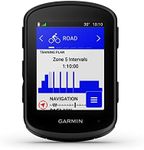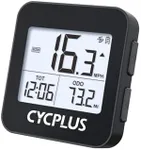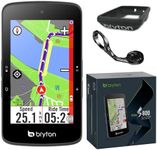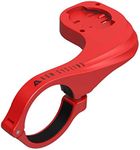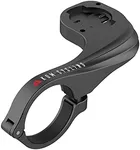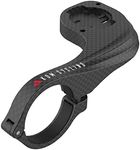Buying Guide for the Best Cycling Gps
Choosing the right cycling GPS can significantly enhance your biking experience, whether you're a casual rider or a serious cyclist. A cycling GPS helps you navigate routes, track your performance, and stay connected. To make the best choice, consider your riding style, the features you need, and how you plan to use the device. Here are some key specifications to look at when selecting a cycling GPS.Screen Size and ResolutionThe screen size and resolution of a cycling GPS are important because they determine how easily you can read the information displayed. Larger screens with higher resolution provide clearer and more detailed maps and data, which is especially useful for navigation and tracking performance metrics. If you often ride in bright sunlight or need to see detailed maps, opt for a GPS with a larger, high-resolution screen. For casual riders who just need basic information, a smaller screen may suffice.
Battery LifeBattery life is crucial for long rides and multi-day trips. A cycling GPS with longer battery life ensures that you won't run out of power during your ride. Battery life can range from a few hours to several days, depending on the model. If you plan on long-distance rides or bikepacking adventures, look for a GPS with extended battery life. For shorter rides or daily commutes, a device with moderate battery life should be adequate.
Mapping and NavigationMapping and navigation features help you find your way and explore new routes. Some cycling GPS devices offer detailed maps, turn-by-turn navigation, and route planning capabilities. These features are essential for riders who frequently explore unfamiliar areas or participate in events. If you need precise navigation and route planning, choose a GPS with advanced mapping features. For riders who stick to familiar routes, basic navigation functions may be sufficient.
ConnectivityConnectivity options, such as Bluetooth and ANT+, allow your cycling GPS to sync with other devices like heart rate monitors, power meters, and smartphones. This integration helps you track your performance and stay connected while riding. If you use multiple sensors or want to receive notifications from your phone, look for a GPS with robust connectivity features. Casual riders who don't use additional sensors may not need extensive connectivity options.
Data Tracking and AnalysisData tracking and analysis features enable you to monitor your performance, including speed, distance, elevation, and heart rate. Advanced models offer detailed analytics and can sync with apps to provide deeper insights into your rides. If you're training for an event or want to improve your performance, choose a GPS with comprehensive data tracking and analysis capabilities. For casual riders, basic tracking features may be sufficient.
Durability and Weather ResistanceDurability and weather resistance are important for ensuring your cycling GPS can withstand various riding conditions. Look for devices that are water-resistant and built to endure rough terrain and weather changes. If you often ride in challenging environments or adverse weather, opt for a GPS with high durability and weather resistance. For fair-weather riders, these features may be less critical.
Ease of UseEase of use refers to how intuitive and user-friendly the cycling GPS is. A device with a simple interface and easy-to-navigate menus can make your riding experience more enjoyable. If you're not tech-savvy or prefer straightforward operation, choose a GPS known for its ease of use. Advanced users who enjoy customizing settings and exploring features may prefer a more complex device.
